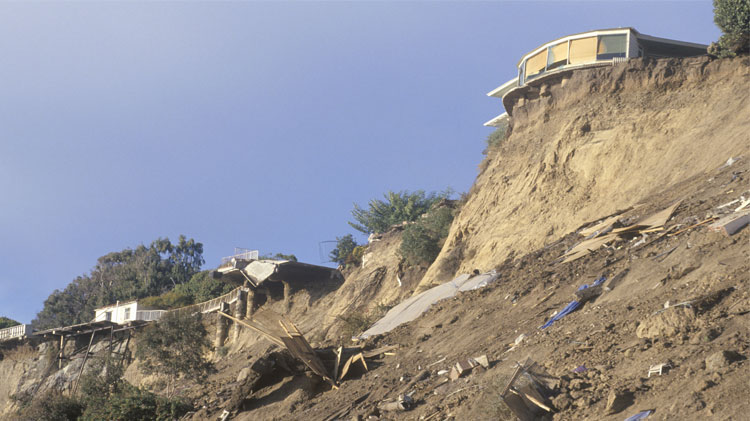What to do after an earthquake
Steps to stay safe after an earthquake and ways to help protect your property.
Earthquakes can be scary, but the danger doesn't end when the shaking stops. Even if you've prepared for an earthquake, you and your family's safety should be your top priority. There are several actions that you should take after an earthquake stops to help keep you and your family safe and protect your property.
Evaluate your situation
Stay calm and make sure you are in a safe place. If possible, put on protective clothing such as sturdy boots or shoes in case you need to walk through debris or broken glass. If your home or the location you are at is damaged, slowly and safely evacuate. Get outside to your designated meeting spot or a safe place away from damaged roadways, tall structures and power lines. While getting to a safer spot, be on the lookout for structural damage, falling debris, gas leaks, downed power lines or flammable liquid spills. And do not enter any damaged buildings or use an elevator.
Check for injuries
Look for common earthquake injuries such as head trauma, lacerations or fractures. The quicker you can get attention for injuries, the better. If you have your earthquake bag with you, a first-aid kit will be helpful. Contact local authorities for a serious medical emergency.
Expect aftershocks
Stay alert and be prepared for aftershocks. According to the U.S. Geological Society, aftershocks are smaller earthquakes that happen after the main earthquake. Numerous earthquake aftershocks can continue for a long time after the main earthquake, so don't assume that it is safe to go back to your home.
Find higher ground
If you are near the shore and in an area that could experience a tsunami, move inland to higher ground immediately. A tsunami can be very fast moving and could arrive within minutes of an earthquake.
Establish communication and monitor the situation
Check on family, neighbors or coworkers, and help them if needed. Listen for updates and instructions from local media with a battery-operated radio or cellphone. They will likely have emergency broadcasts with damage information and rescue centers. Only return home if authorities indicate it is safe to do so.
Inspect your home
When entering your home after an earthquake, you should be extremely careful. If it is safe to do so, shut off any utilities that could create a hazard. Damage to the building may not be apparent to the eye and you need to watch each step. You should also have an exit route planned in case of an aftershock. Be on the lookout for:
- Damaged walls, floors, doors and staircases
- Gas leaks, which may be apparent by smell or hissing sounds
- Electrical system damage
- Sewage or water line damage
- Loose drywall, plaster or ceilings that can fall
Safety should be the #1 priority when inspecting damage or making any repairs.
If you've been affected by the recent earthquake in your area and need to report your claim, text the word “CLAIM” to 62789 to receive a link or you can report easily through statefarm.com®, our State Farm mobile app, contacting your State Farm agent or calling 800-SFClaim (800-732-5246800-732-5246).
If you determine your home sustained damage, to protect your property from further damage or loss, be sure to make reasonable and necessary temporary repairs. Keep an accurate record of repair expenses along with any photos of damage. If you have a covered loss, these repairs may be reimbursed by State Farm.
